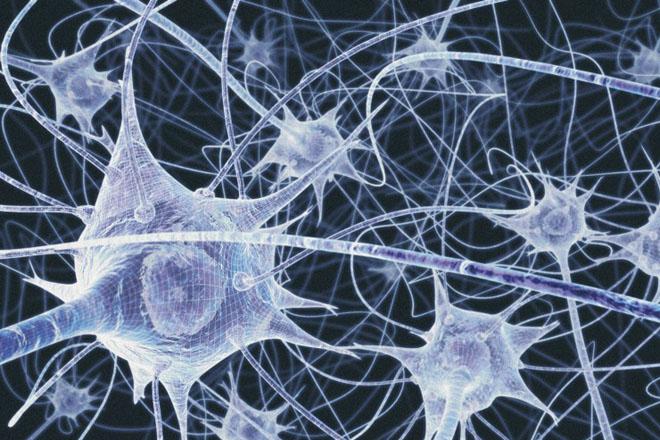New mathematical method reveals structure in neural activity in the brain

This is an artist's illustration of neurons. Credit: Benedict Campbell, Wellcome Images/CC
“Our method is the first to be able to reveal this structure without our knowing an external stimulus ahead of time. We've now shown that our new method will allow us to explore the organizational structure of neurons without knowing their function in advance.”
“The traditional methods used by researchers to analyze the relationship between the activities of neurons were adopted from physics,” said Carina Curto, associate professor of mathematics at Penn State, “but neuroscience data doesn't necessarily play by the same rules as data from physics, so we need new tools. Our method is a first step toward developing a new mathematical toolkit to uncover the structure of neural circuits with unknown function in the brain.”
The method — clique topology — was developed by an interdisciplinary team of researchers at Penn State, the University of Pennsylvania, the Howard Hughes Medical Institute, and the University of Nebraska-Lincoln. The method is described in a paper that will be posted in the early online edition of the journal Proceedings of the National Academy of Sciences during the week ending October 23, 2015.
“We have adopted approaches from the field of algebraic topology that previously had been used primarily in the domain of pure mathematics and have applied them to experimental data on the activity of place cells — specialized neurons in the part of the brain called the hippocampus that sense the position of an animal in its environment,” said Curto.
The researchers measured the activity of place cells in the brains of rats during three different experimental conditions. They then analyzed the pairwise correlations of this activity — how the firing of each neuron was related to the firing of every other neuron.
In the first condition, the rats were allowed to roam freely in their environment — a behavior where the activity of place cells is directly related to the location of the animal in its environment. They searched the data to find groups of neurons, or “cliques,” in which the activity of all members of the clique was related to the activity of every other member. Their analysis of these cliques, using methods from algebraic topology, revealed an organized geometric structure. Surprisingly, the researchers found similar structure in the activities among place cells in the other two conditions they tested, wheel-running and sleep, where place cells are not expected to have geometric organization.
“Because the structure we detected was similar in all three experimental conditions, we think that we are picking up the fundamental organization of place cells in the hippocampus,” said Itskov.
###
In addition to Itskov and Curto, other members of the research team include Chad Giusti at the University of Pennsylvania and Eva Pastalkova at the Howard Hughes Medical Institute.
The research was supported by the National Science Foundation (grant numbers DMS 1122519, DMS 122566, and DMS 1537228), the Alfred P. Sloan Foundation, the Defense Advanced Research Projects Agency Young Faculty Award (grant number W911NF-15-1-0084), and the Howard Hughes Medical Institute.
CONTACTS
Vladimir Itskov: vladimir.itskov@psu.edu
Carina Curto: cpc16@psu.edu
Barbara Kennedy (PIO): science@psu.edu, (+1) 814-863-4682
ARCHIVE
This press release will be archived online at http://science.
Media Contact
All latest news from the category: Life Sciences and Chemistry
Articles and reports from the Life Sciences and chemistry area deal with applied and basic research into modern biology, chemistry and human medicine.
Valuable information can be found on a range of life sciences fields including bacteriology, biochemistry, bionics, bioinformatics, biophysics, biotechnology, genetics, geobotany, human biology, marine biology, microbiology, molecular biology, cellular biology, zoology, bioinorganic chemistry, microchemistry and environmental chemistry.
Newest articles

NASA: Mystery of life’s handedness deepens
The mystery of why life uses molecules with specific orientations has deepened with a NASA-funded discovery that RNA — a key molecule thought to have potentially held the instructions for…

What are the effects of historic lithium mining on water quality?
Study reveals low levels of common contaminants but high levels of other elements in waters associated with an abandoned lithium mine. Lithium ore and mining waste from a historic lithium…

Quantum-inspired design boosts efficiency of heat-to-electricity conversion
Rice engineers take unconventional route to improving thermophotovoltaic systems. Researchers at Rice University have found a new way to improve a key element of thermophotovoltaic (TPV) systems, which convert heat…



